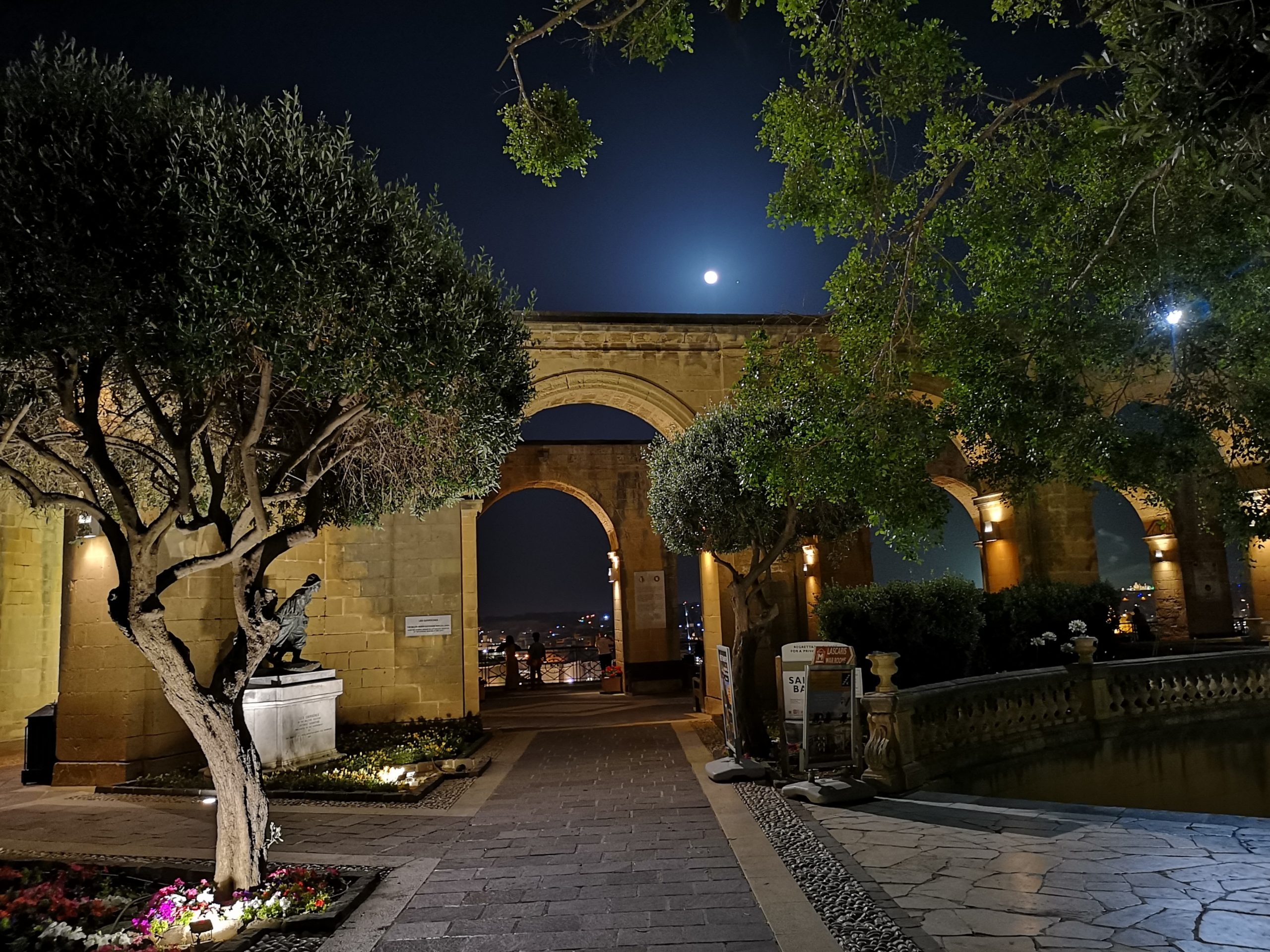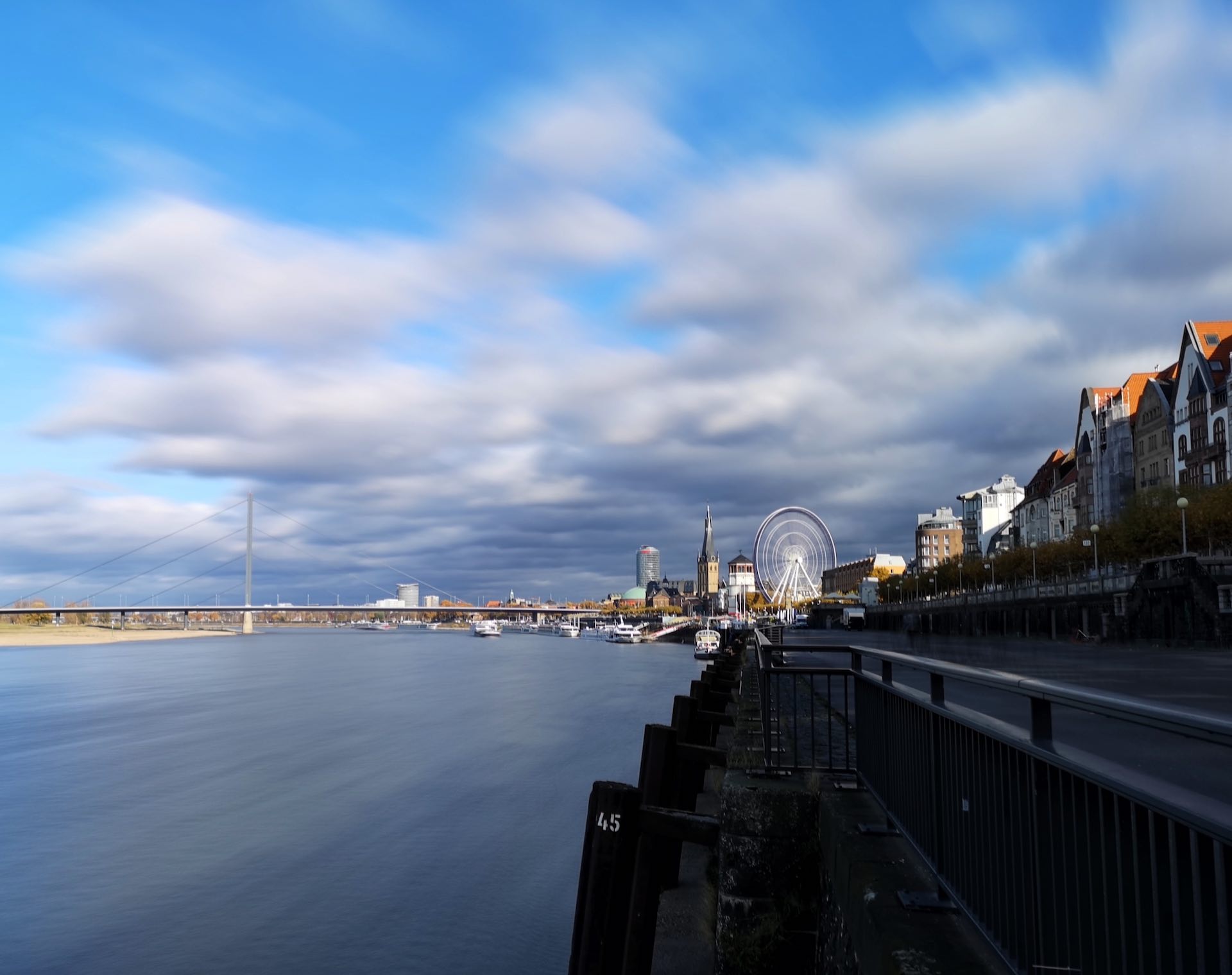Over 7 tonnes of pure muscle thunder across the arena floor. A total of 20 stud stallions from the Salzburg Noriker Breeding Association, 10 stallions per round, competed on 23 June 2018 at the Noriker Stallion Parade to determine the hierarchy for their summer on the alpine pastures. This year, the event took place for the 26th time in the beautiful Rauris Valley against an impressive mountain backdrop.
For many years, I have wanted to see this spectacle live – this year, I finally managed it!
Noriker stallion drive Rauris 2018
At 7:30 a.m., two and a half hours before the event begins, I meet up with two friends at the Alpengasthof Bodinghaus in the rear Rauris Valley. There is no sign of summer yet; it is a frosty 12 degrees Celsius and the sun has not yet come out. We are the ninth car to arrive at the car park. Many more will follow: over 5,000 people come to watch the stallion drive.
Getting up early pays off: we have a bench in the front row, right next to the gate through which the stallions are led in. Two thermos flasks of tea and a whole basket full of provisions also help to pass the time. We watch as the first row, the second row and even the forest slope fill up with people. The event is perfectly organised. Employees drive wheelbarrows around the large paddock, the arena, along the fence and sell drinks. At the stands, you can buy everything from schnitzel sandwiches to saddle blankets and cowbells.
The excitement is building, here we go!
The presenter enters the arena. First, of course, there are a series of thank-yous, introductions and speeches. But there is also an explanation of what we are about to see: 20 stud horses owned by the Salzburg Breeding Association, divided into two groups, the ‘old stallions’ and the ‘young stallions’. Even though it looks brutal when the powerful animals charge at each other, it is really just roughhousing. After the strenuous breeding season, the animals are taken to the alpine pastures for two months, where they can enjoy their well-deserved holiday. To do this, they must first establish the pecking order. Kicks, bites, blows – completely normal. We don't see any injuries worse than bloody lips. The animals' owners and drivers with sticks watch over the fights. They prevent a horse from being cornered and make sure that no serious fights break out.
The programme begins with a group of Alpine whipcrackers. Five young men swing their whips and produce a precise cracking rhythm. It is quite an experience. Internal note to self: I would love to see a competition between these groups!
To the YouTube video of the Alpenschnalzer
The group of old stallions at the Noriker stallion drive
Even before they are led into the arena, you can hear the stallions. They neigh and thunder against the walls of the horse trailers. One by one, they are brought into the arena by their owners and presented: with their name, their age, the number of mares they have covered this year, and their weight. They are between 9 and 14 years old and weigh between 690 and 840 kilograms. Although the men sometimes have quite a bit of trouble leading the excited animals to their places, well spaced and separated from each other, you can already see how easy these heavyweights are to handle.
Once all ten stallions have taken their places, they are simultaneously released from their bridles on command and let loose. The stallions thunder towards each other, neighing and bellowing. They quickly split into smaller ‘fighting groups’ of two to three animals. They fight, bite, kick, rear up and stamp. Yet what is astonishing is that they are quite relaxed. It takes less than 20 minutes before the first Noriker horses lower their heads and start grazing between their scuffles.
We watch the stallions, all of whom have a number on their croups, with excitement: who will be this year's lead stallion?
To the YouTube video of the old stallions
Photo impressions of the first group of old stallions
The stallions are led into the arena by their owners. The natural backdrop is impressive, and every seat is taken. All ten animals are positioned well apart from each other.

Here we go: All the stallions are simultaneously released from their bridles and let loose.
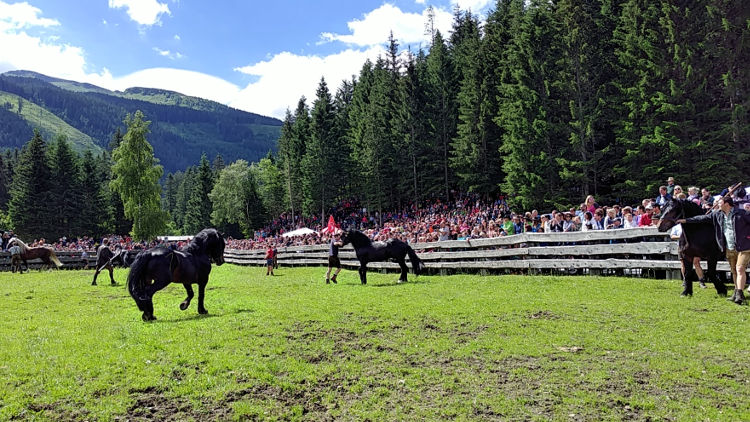
The handlers return to the entrance and leave the arena to the stallions. Drivers stand at strategic locations equipped with sticks to prevent serious fights from breaking out or an animal from being cornered.
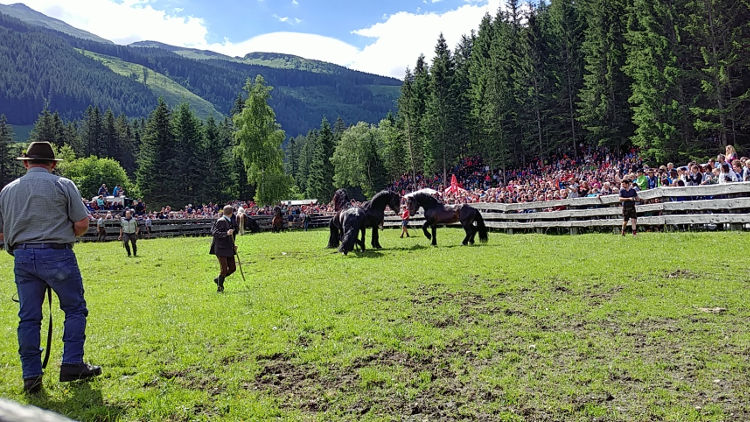
The arena is now open for the ranking battles.
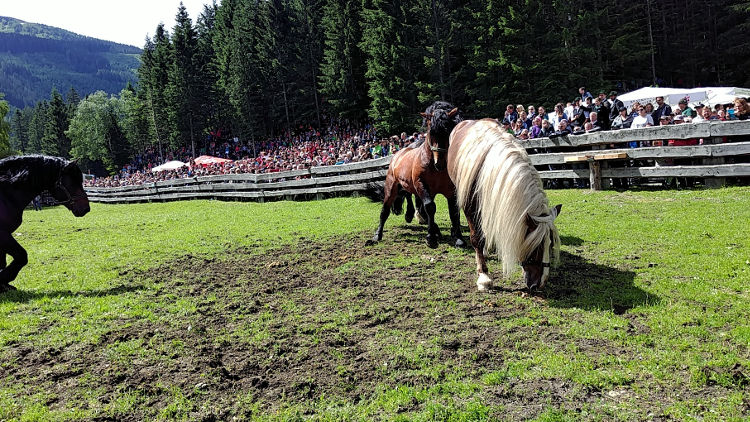
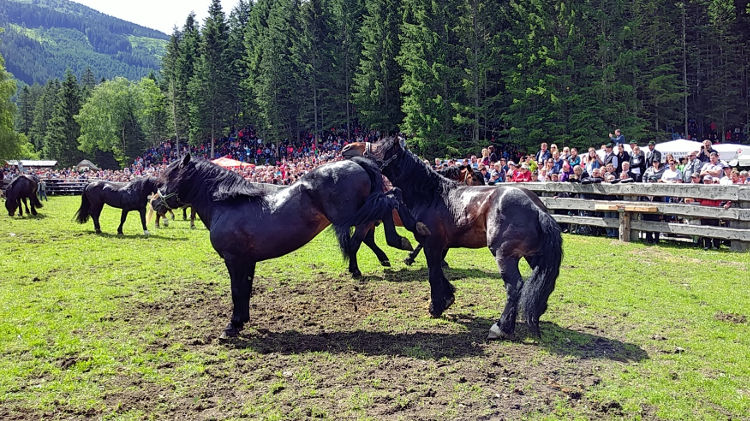
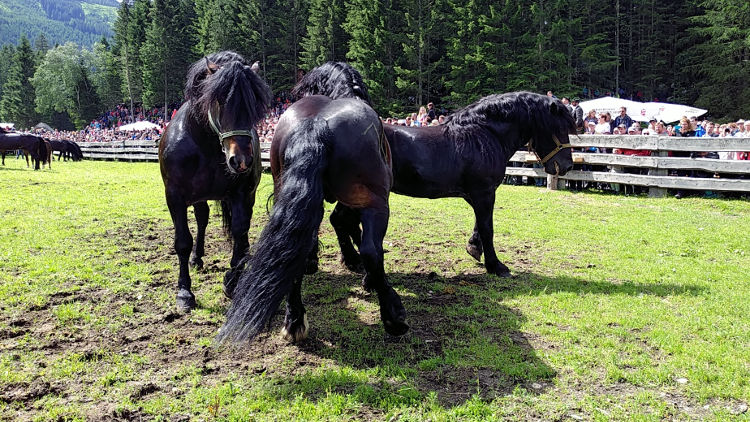
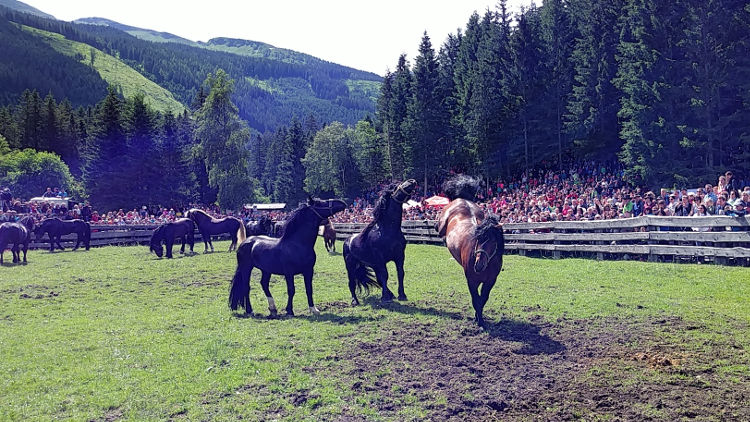
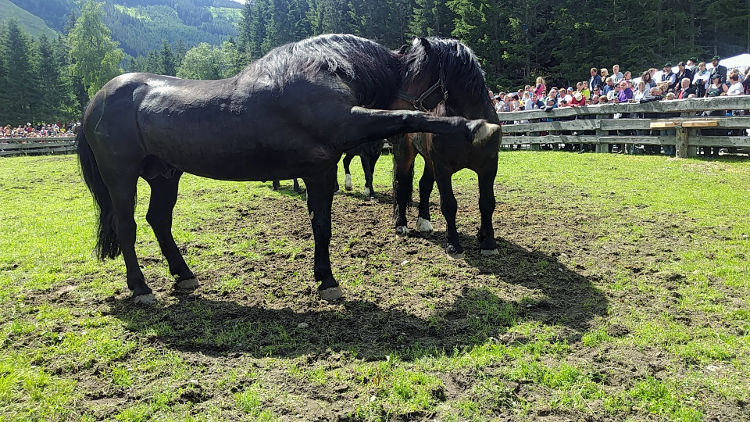
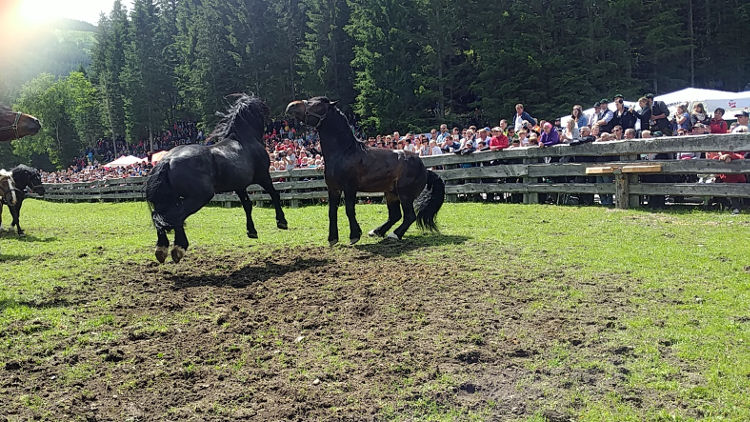
On one occasion, the situation between two stallions becomes serious: one bites the other's flank, the animals kneel down, and a serious fight threatens to break out. The driver is immediately on the scene and chases them apart. None of the animals are injured.
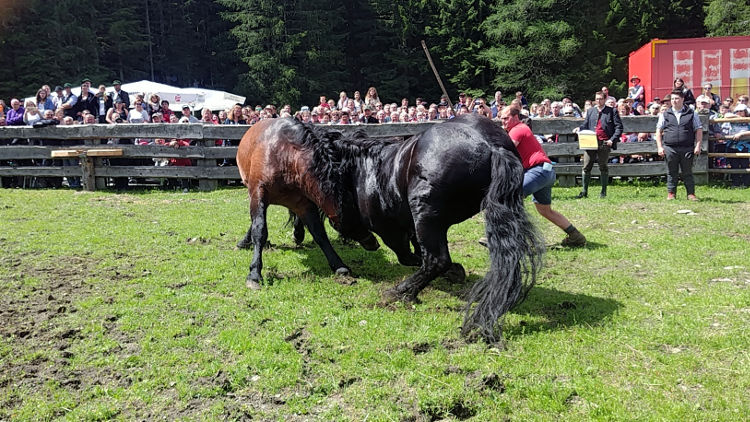
After less than two hours, the group has calmed down considerably. Two animals keep getting into fights, but it is clear that they have already settled most of their differences. The horse owners recapture their animals with the help of the drivers. Vötter Vulkan XVII, who was already the leader of the group last year, has defended his title. Calmly, they walk out of the arena one after the other on the reins and wander onto the alpine pasture. There will probably be a few more scuffles over the next few days, then calm will return and the animals can enjoy their summer for two months.
The group of young stallions at the Noriker stallion drive
After a break, it is once again the whip crackers who kick off the second part of the day. Then the young stallions enter the arena, aged between 3 and 9 years old and weighing between 700 and 820 kilograms. It is immediately apparent that these are young horses. They are more boisterous and excited. One stallion pulls his handler to the ground, who just manages to hold on to the lead rope.
The way they attack each other after being released also suggests significantly more excitement. They scream and wrestle for a long time in one or two large groups, while the older stallions have spread out evenly. In the following video, you can see the first few minutes of the ranking fights immediately after they were released.
To the YouTube video of the young stallions
Photo impressions of the second group: the young stallions
The stallions show their temperament.
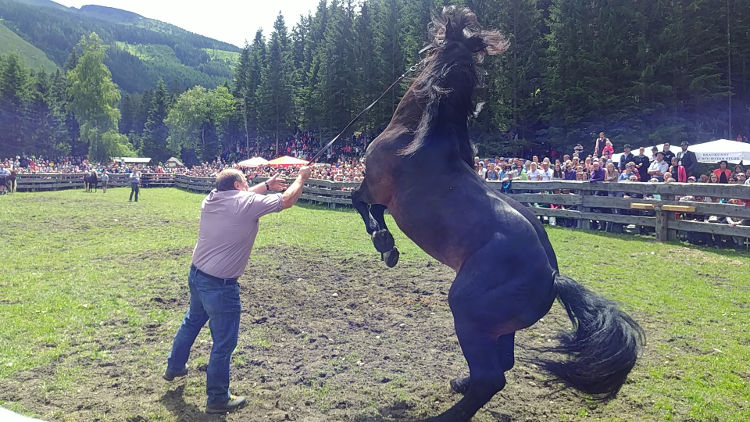
The crowd favourite: a stallion the colour of blue roan.
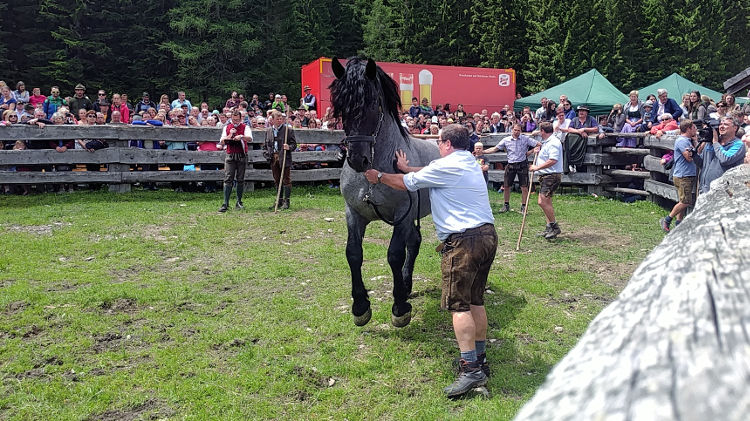

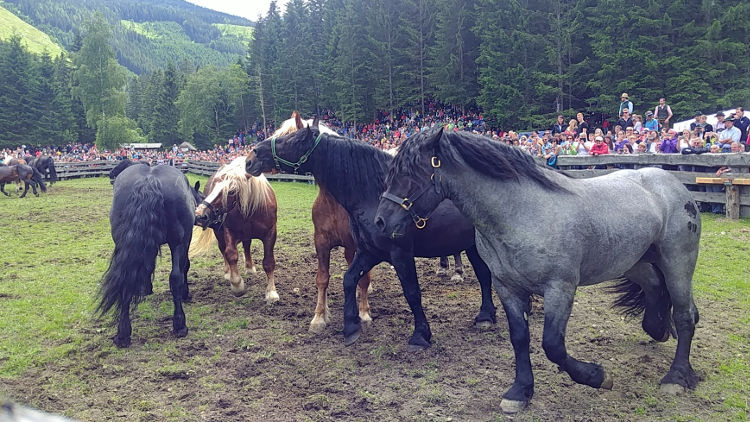
Amigo Nero XII, the chestnut stallion in the middle, shows his temperament. He became the lead stallion in this group.
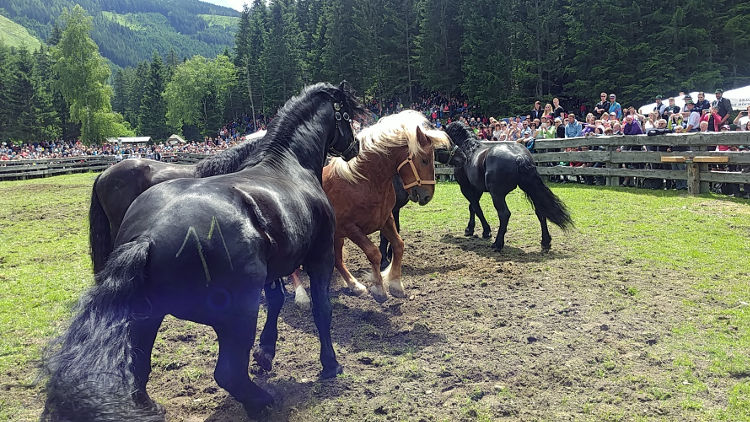
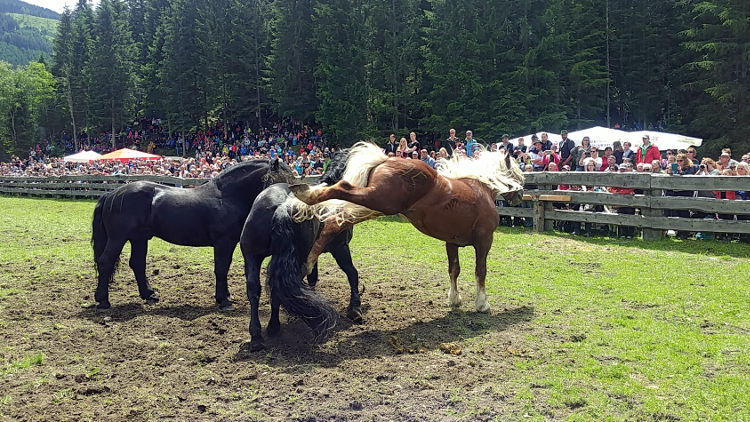
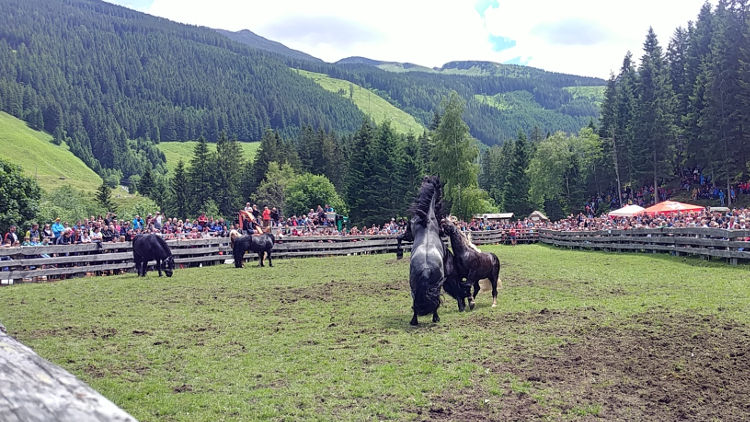
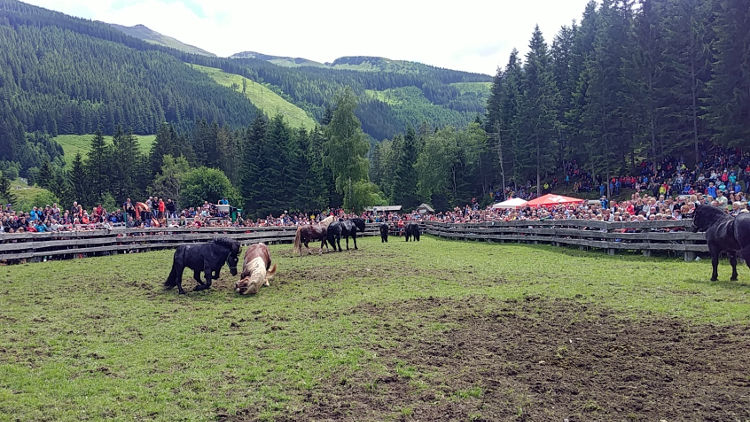
An hour and a half later, this spectacle is also over. The stallions are sweaty and out of breath. Unlike the older stallions, they are not so keen to be recaptured. This can lead to dangerous situations: a stallion that is still running free must not be allowed to attack one that has already been recaptured, as this would be very dangerous for the animal's owner. With combined forces, the last animal is also driven into the corner and can be separated. These animals now also walk in single file to their summer pasture, separated from the older stallions.
The 2018 Noriker Stallion Drive was a fantastic experience that I can recommend to everyone, not just horse lovers. Next year, the drive will take place on 22 June 2019. But be sure to arrive early if you want to see the horses – only the front row really gets to experience it live!


